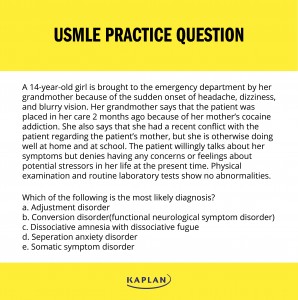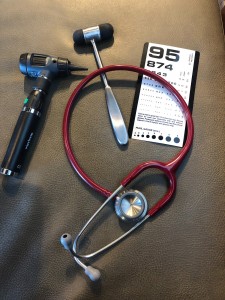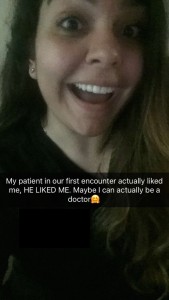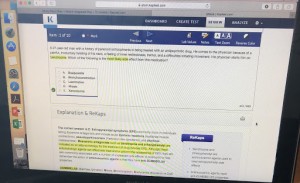A Week in the Life of an M2
I spent a lot of time before starting medical school imagining what my life would be like. You work so hard as a pre-med to get the grades, MCAT score, perfect extracurriculars, and the interviews you need to get a highly coveted seat in medical school. It is a hectic and anxiety inducing time, where you are always questioning your next move and the repercussions of your decisions. Now that I am in medical school, I can tell you that most of what I thought it would be like was wrong. Many people see getting accepted to medical school as a finish line of sorts. But the truth is, the day you receive your acceptance letter is the beginning of an even harder, more challenging, and just as rewarding journey.
My osteopathic medical school has a different curriculum than most, known as Problem-Based Learning (PBL). In other words, we do not get basic science lectures for any course other than the anatomical studies (anatomy, embryology, and histology). In PBL, we work through cases much like you would as a medical doctor. We start with a chief complaint, history, and physical exam, developing an extensive differential diagnosis list. Then, we work through test results. PBL emphasizes self-directed study with a team approach. I chose to attend a PBL school because I was intrigued by being able to work through cases, identifying what processes are happening, and being able to choose what to read in all my basic science books. This adds an accountability factor, as you are responsible for learning the material, instead of just passively sitting in a lecture hall.
So with that, I would like to share with you all what a typical week looks like for me, a second year medical student.
Sunday
I usually wake up and make a plan for my day that includes doing basic chores, such as laundry, cleaning or grocery shopping that I was not able to do during the previous week. Once I am done with those things, usually by early afternoon/evening. I sit down to look at my schedule for the week, paying attention to what exams I may have, what classes are on the schedule and what material I need to get done for the week. I use an excel spreadsheet to plan out my reading and how I am going to utilize my Kaplan Integrated Plan and Qbank. Of course, I spend a few hours before bed studying. Below is an example of what my excel sheet looks like at the beginning of an exam block; my favorite time because it does not have anything on it yet.
Monday
I usually have PBL for two hours, completed before 12pm. After that, the rest of the day is spent studying. For me, I need to go out to study effectively. Staying in my apartment is not as productive, especially because my bed is there and naps are very tempting. So I pick a spot for the day, and stay there until around 7-8pm. After that, I go home and finish my night off with Qbank questions or videos before bed.
Tuesday
I have 2 hours of lecture for my osteopathic principles and practice course (OPP) in the morning. This is the course that differentiates allopathic and osteopathic medical students. Osteopaths get additional training in the musculoskeletal system, which is called osteopathic manipulative treatment (OMT). We learn a series of hands-on techniques used to help diagnose illness or injury and facilitate the body’s natural tendency toward self-healing. I like to say that this extra training gives us more tools in our toolbox when it comes to treating patients. After lecture, I pick another location for the day of studying ahead. I stay there until 7-8pm, then go home and finish off my night with Qbank questions or videos before bed.

Wednesday
Another course we take is called Clinical Exam. We have one patient encounter a week, where we go in and do exactly what we will be doing as practicing physicians. We have standardized patients who have chief complaints ranging anywhere from chest pain to a pain in their hand that will not go away and yes, they are acting. But we are definitely not. This is our chance as medical students to practice really taking a complete history, physical exam, and developing differentials and a plan of treatment. Did I mention that we have 20 minutes to do all this? These are timed encounters to prepare us for the clinical portion of Step 2 (one of the board exams) and for when we are out on rotations. Following our encounters, we also practice writing a SOAP (subjective, objective, assessment, and plan) note, which is how visits are documented. After my patient encounter, I pick another location for the day of studying ahead. I stay there until 7-8pm (are you sensing a trend?), then I go home and finish off my night with Qbank questions or videos before bed.
Thursday
This is our day to practice our OMT for 2 hours in OPP lab. This allows us the chance to practice what we were taught in lecture on Tuesday. I am sure you are wondering who we practice on — more standardized patients? We actually practice on each other! This is a great chance not just to learn the osteopathic techniques, but to practice how to appropriately assess, palpate, and treat dysfunctions. It also gives us as medical students a perspective of what it is like to be the patient. After lab, I pick a spot for the day, and stay there until around 7-8pm. I go home and finish my night off with qbank questions or videos before bed.
Friday
Cue my Monday again: PBL for two hours, completed before 12pm. I have to pick a spot for the day, and stay there until around 7-8pm…. But this time, instead of going home, I usually take the last half of my night off. My friends and I do something together, because nobody can just work, work, and work without a break. We usually go to dinner, have a game night, or catch a movie. This is also a great time to fill each other in on our week. We share our successes and failures, because who better to understand than a fellow medical student.
Saturday
After taking the night off Friday, I start my Saturday just the same as most of my week. Pick my spot, and study for the day.
In Conclusion
Earlier I told you the day you receive your acceptance letter is the beginning of an even harder, more challenging, and just as rewarding journey. I hope you can see why I said that now that you’ve seen my week. A lot of time is spent just sitting somewhere and studying alone. This can become really hard, especially when an exam is getting closer and you’re stressed out beyond belief. But, I hope you can also see all the opportunities I have throughout the week. Those 4 hours a week in PBL are a chance to connect with my classmates and apply the knowledge we are reading in an interactive way. The time spent learning and practicing OMT is a break from the books and gives you that immediate gratification when you can help a classmate who has been having neck pain or back pain from sitting all the time. Our patient encounters allow us to wear our white coats and apply the skills we have been working hard on learning to assess, diagnose and help a patient coming to us in pain or with major concerns. Most importantly, I take Friday nights off to spend time with friends. I have met some of the most inspiring, intelligent, and kind people since starting medical school. We are all in this together.
Tara Tavakoli received her Bachelor’s degree in Biology from the University of Florida. She went on to receive her Masters in Medical Science and is now a second year osteopathic medical student.





